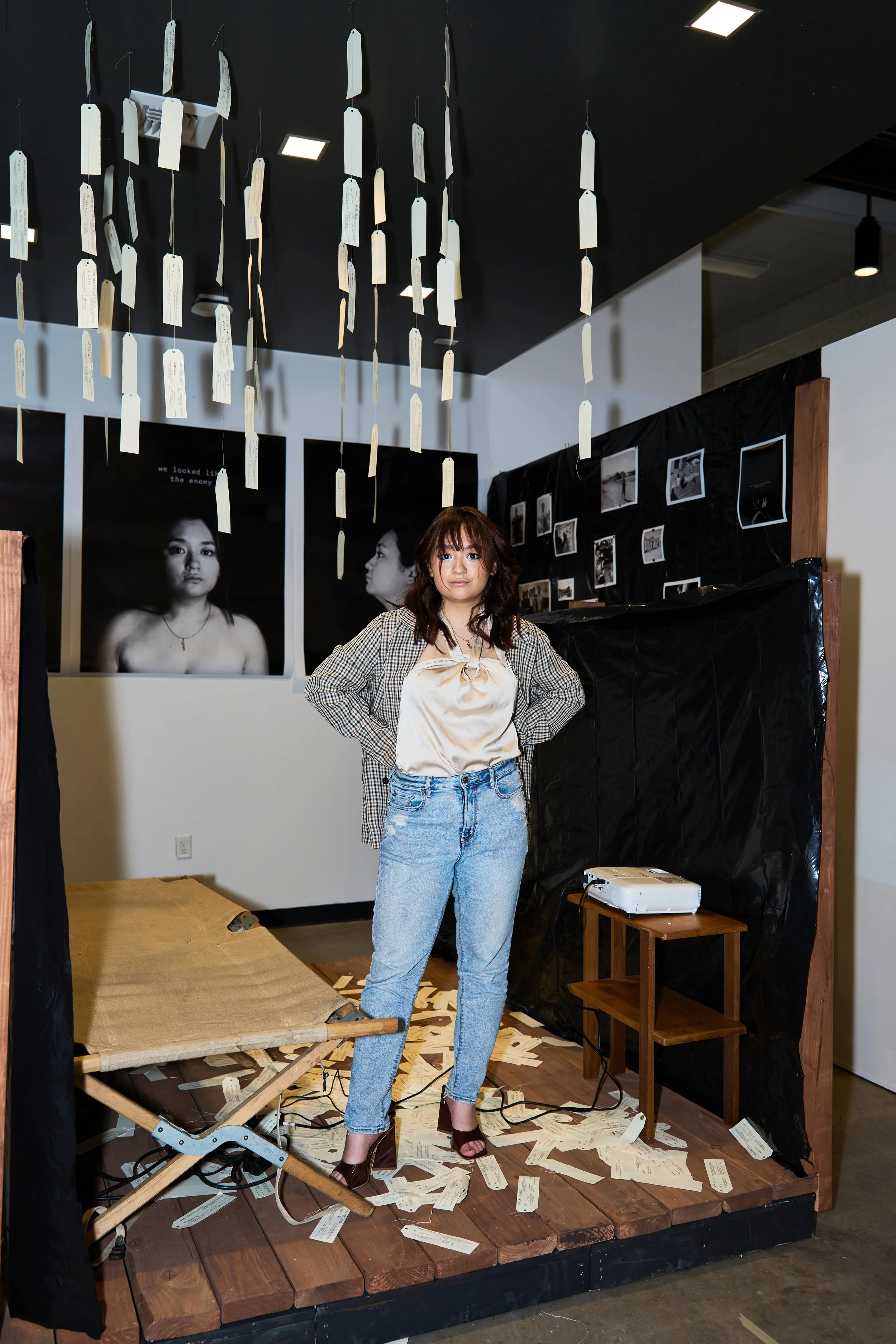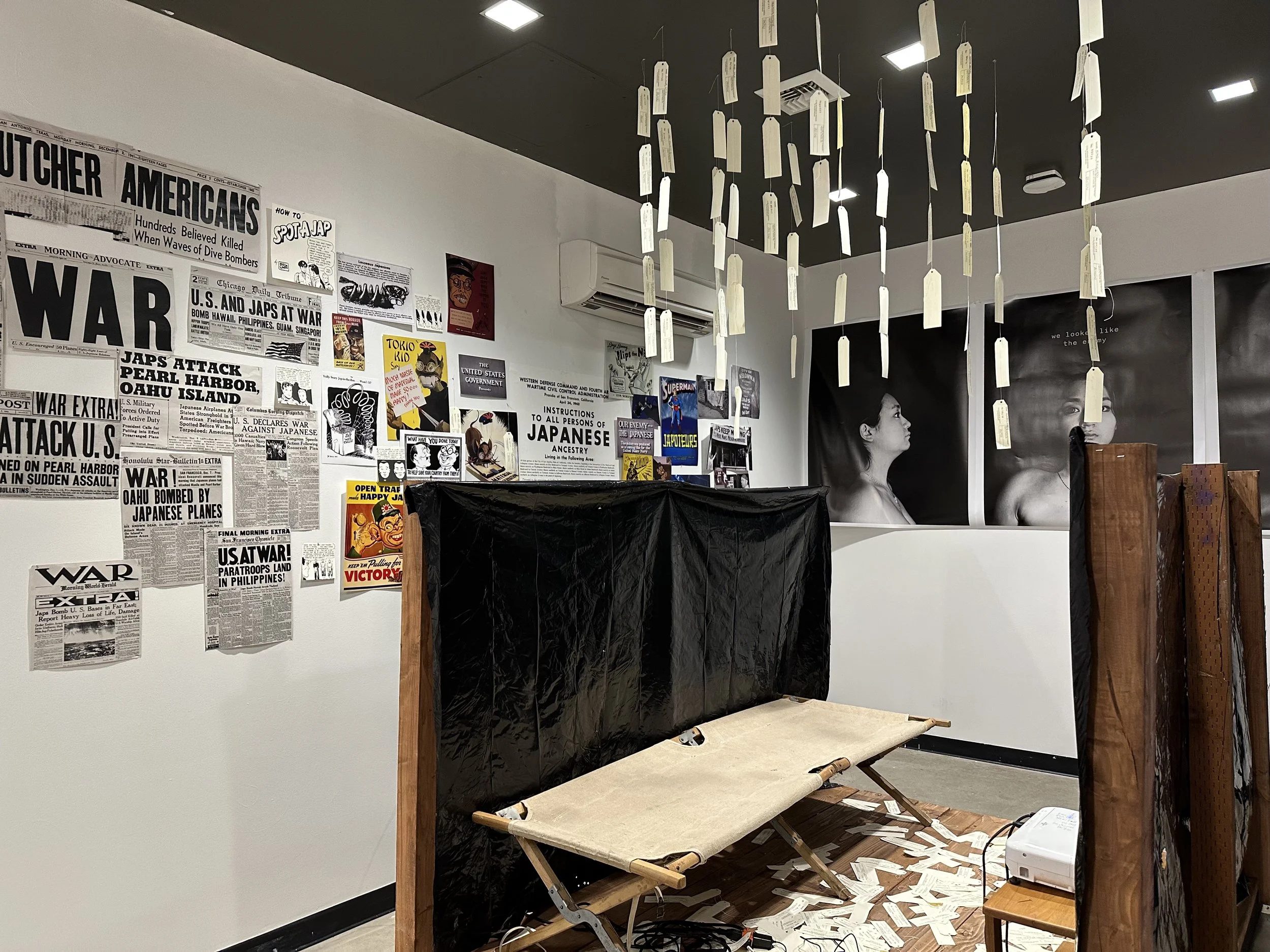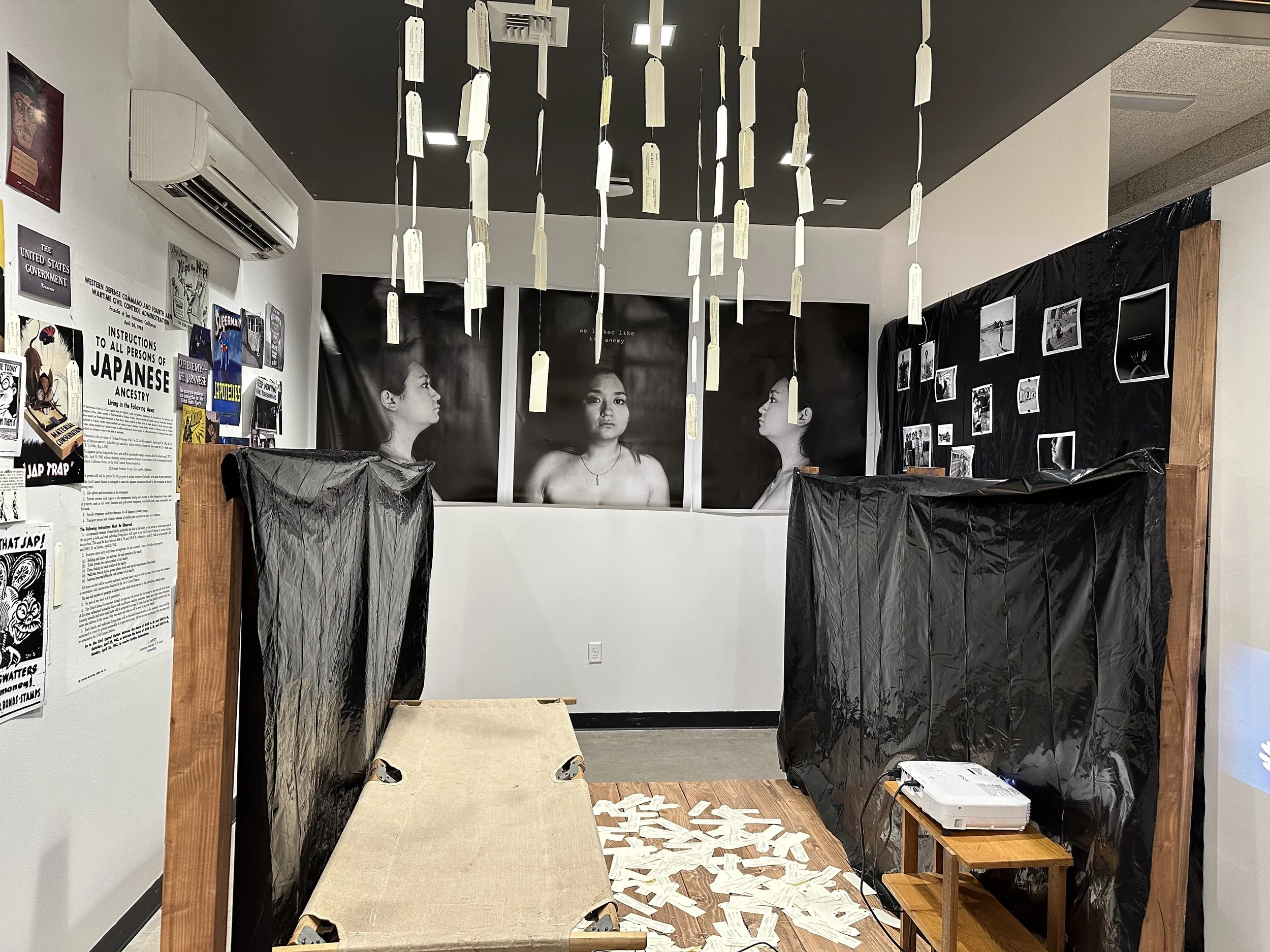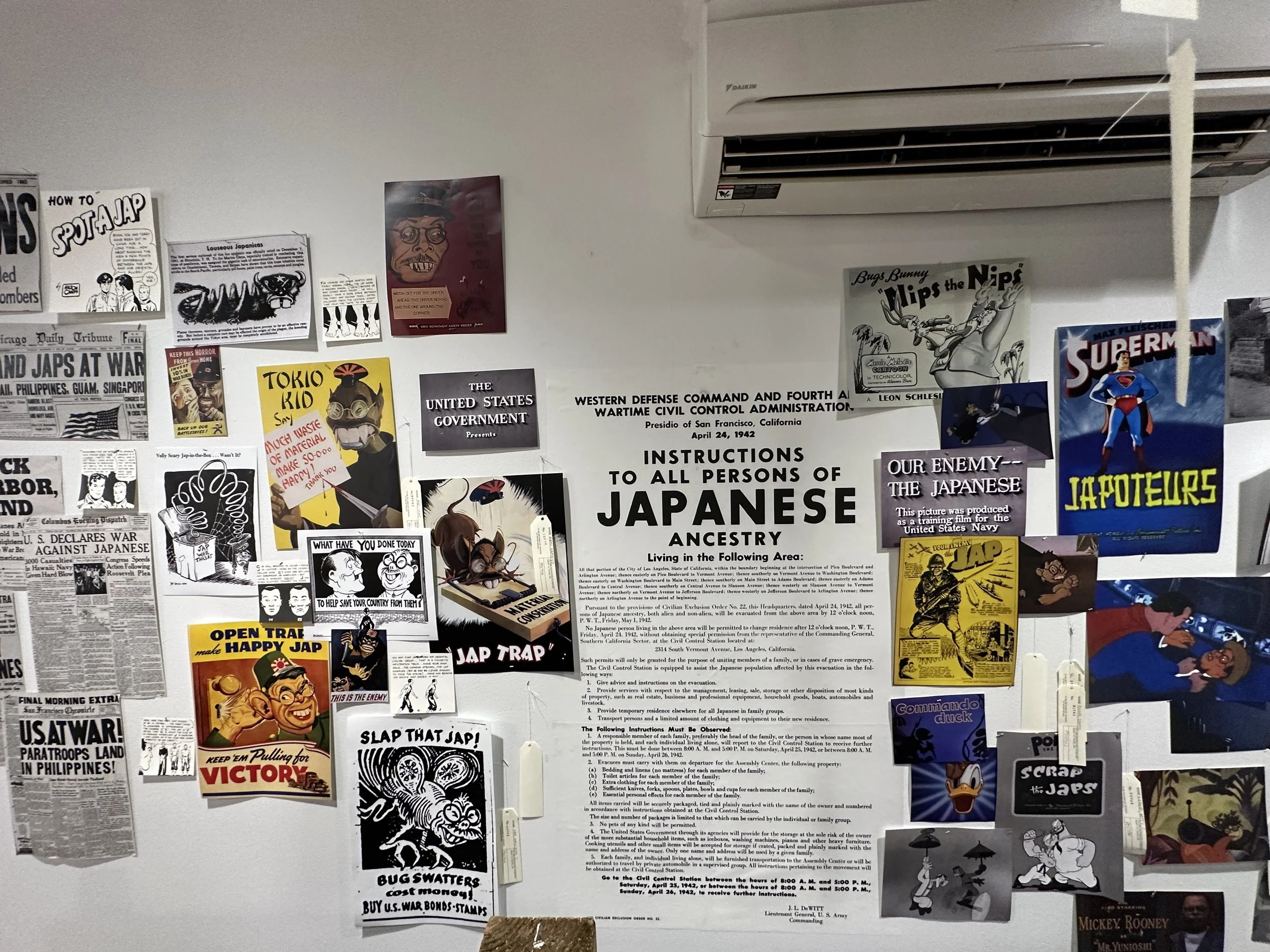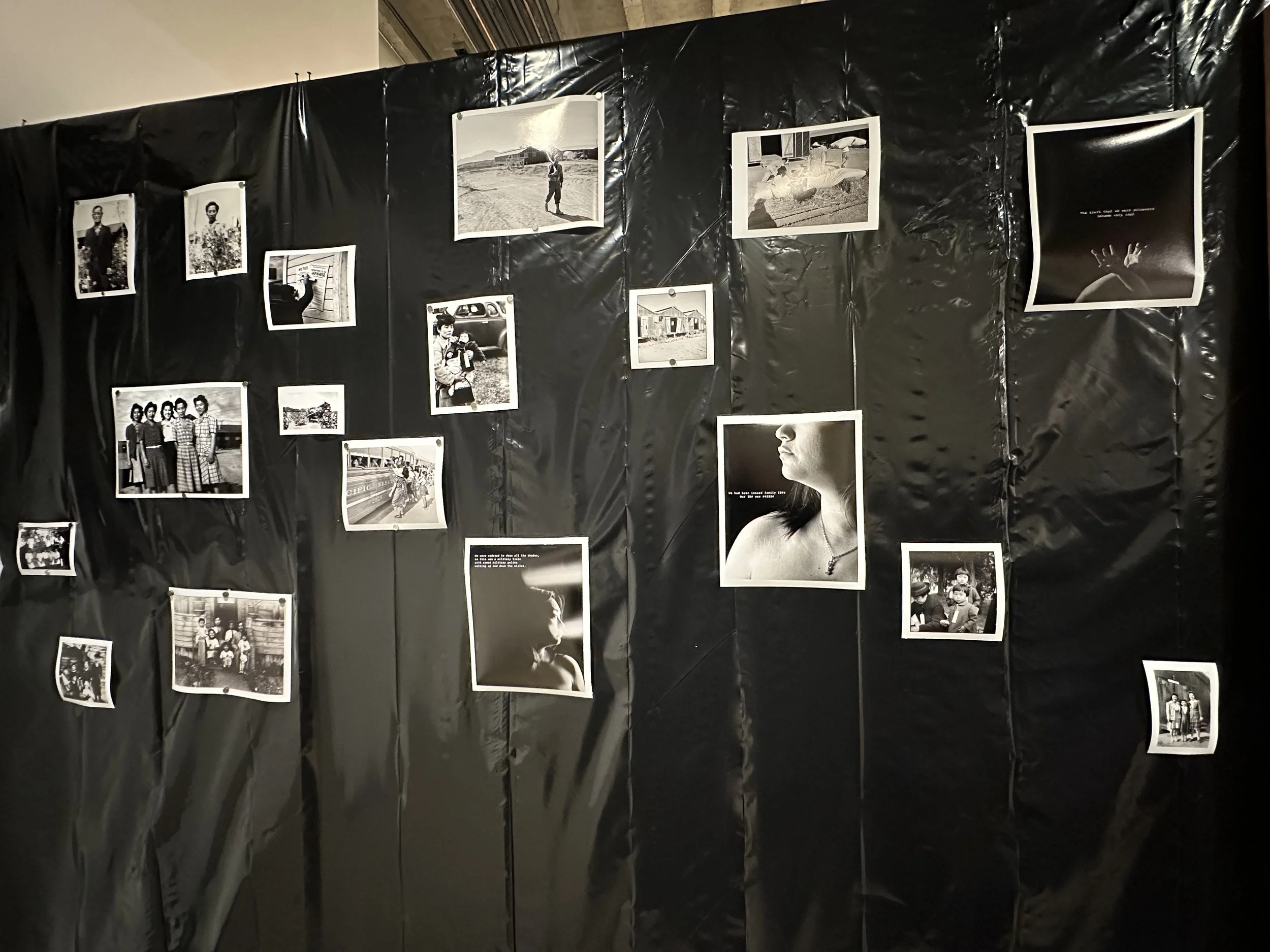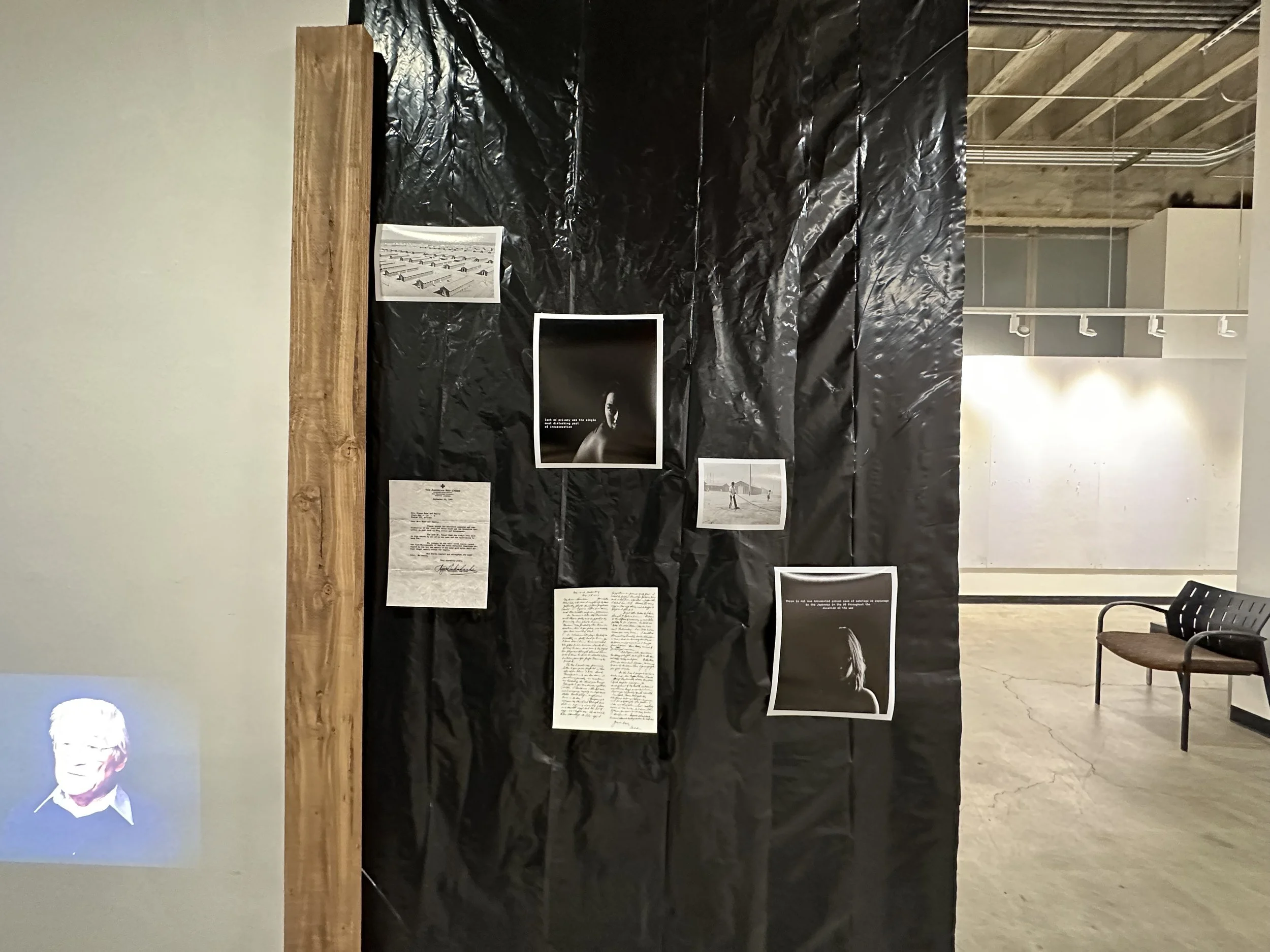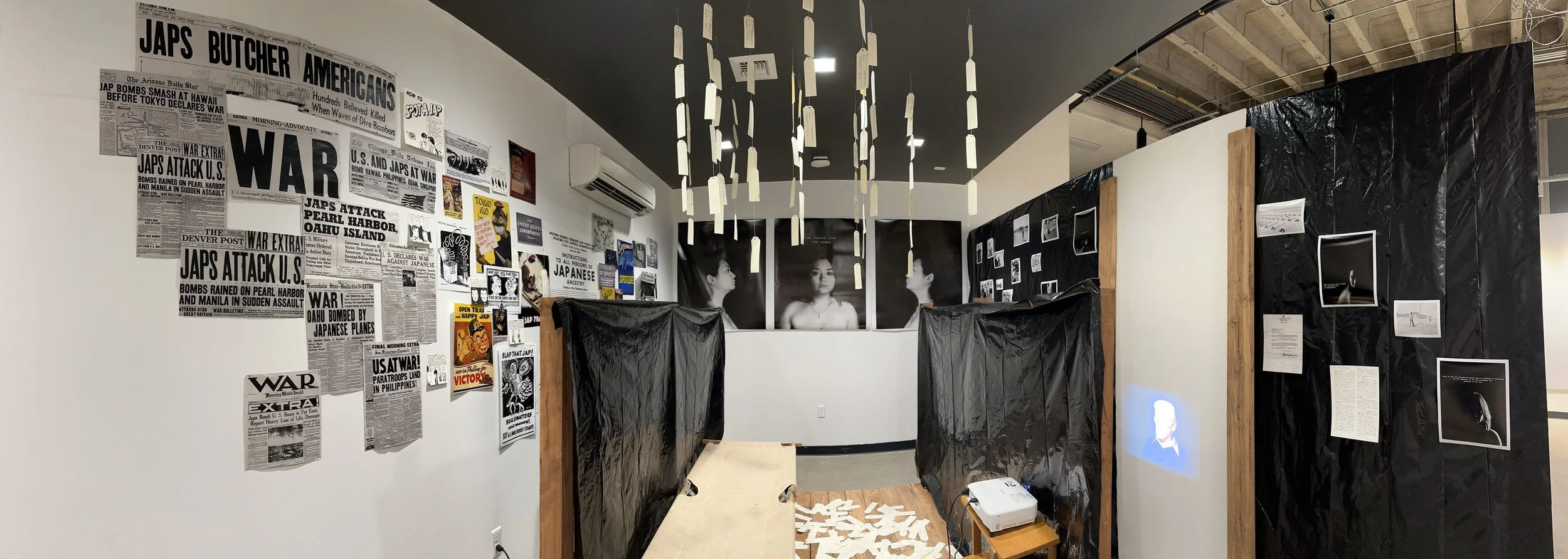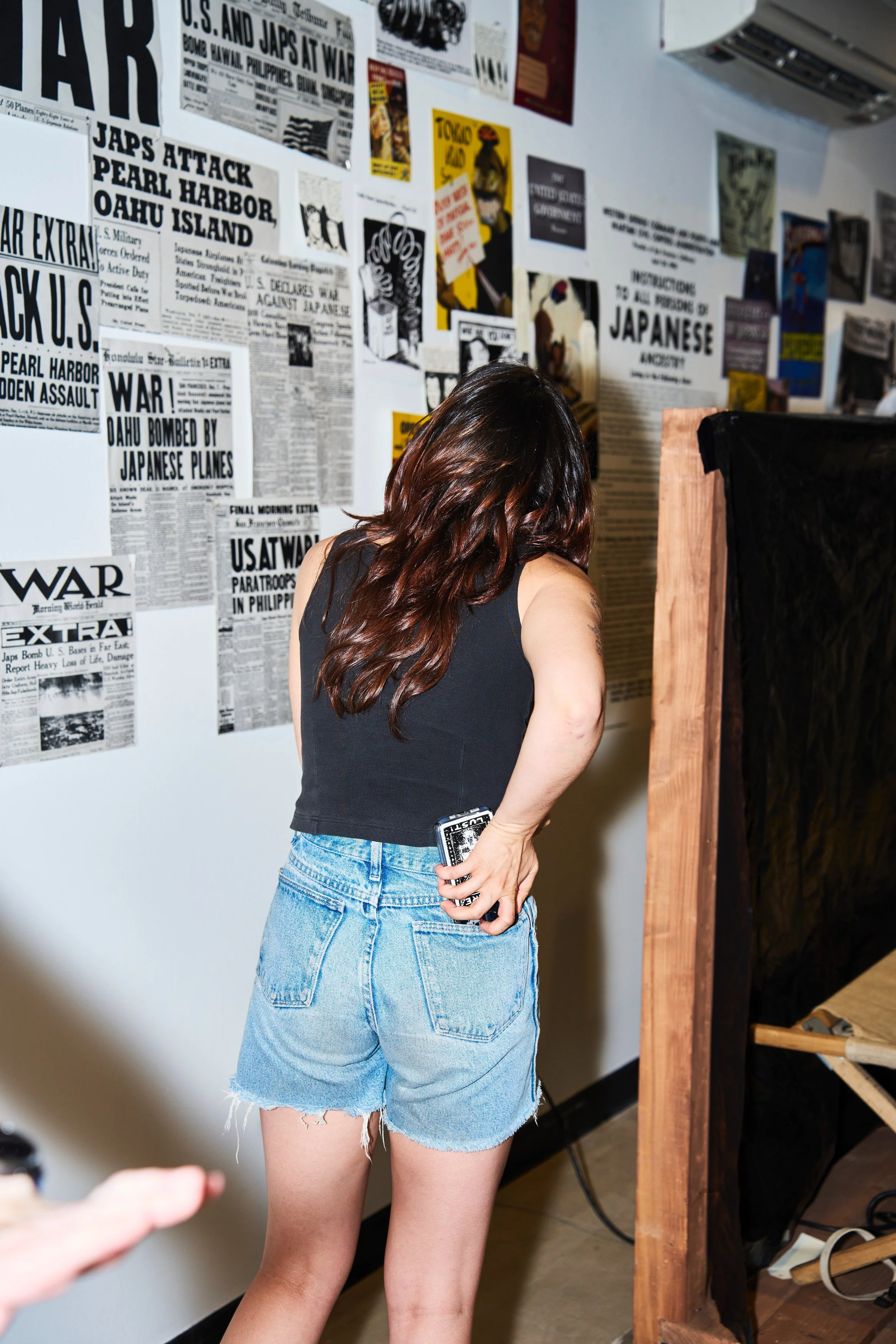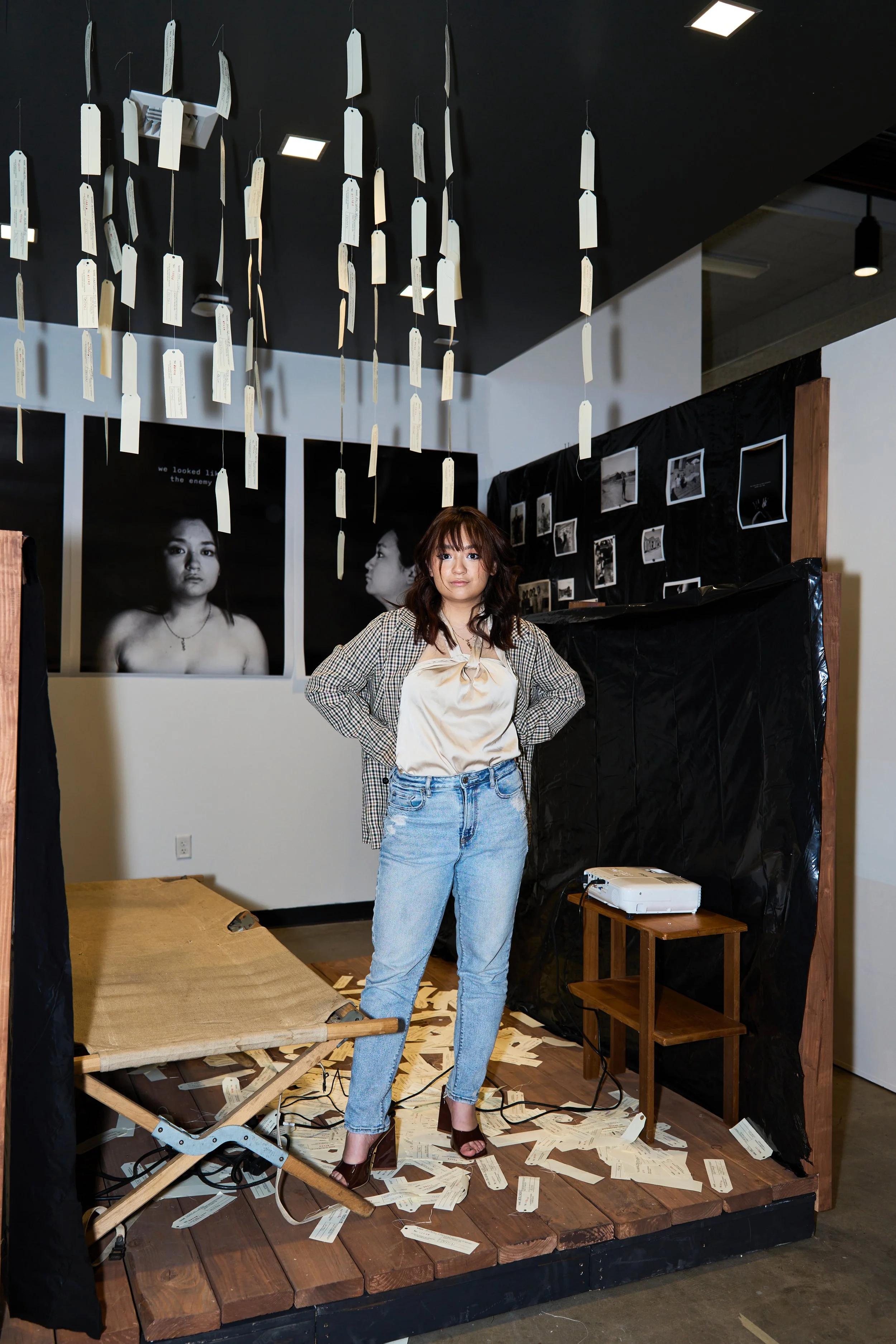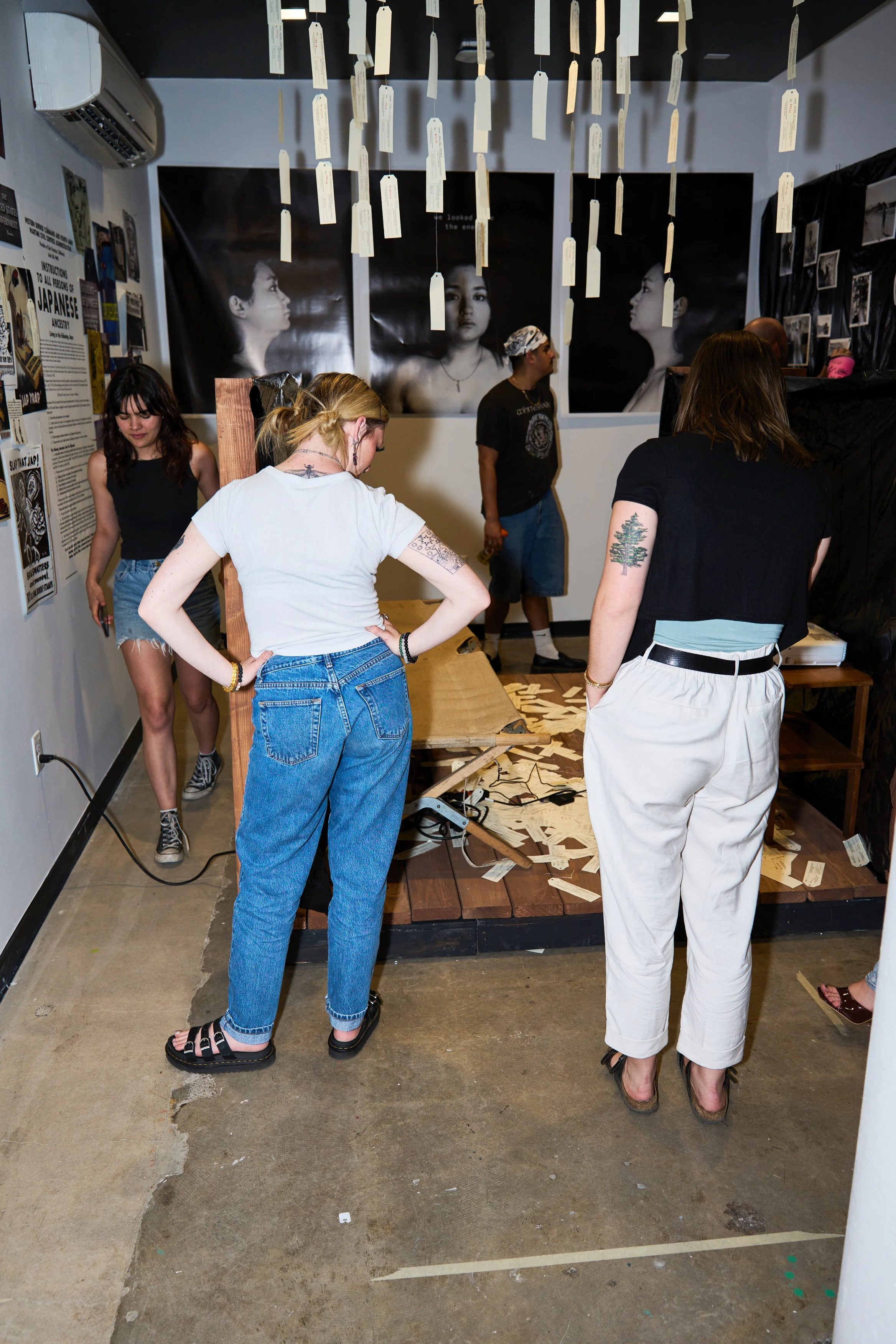We Looked like the Enemy
11 large format black and white images
Digitally scanned
After the bombing of Pearl Harbor, 127,000 Japanese-American citizens were ordered to relocate to Japanese internment camps. When my grandma was my age, she was forcefully removed from her home in Reedly, California, and sent to a Japanese internment camp in Posrton, Arizona along with her parents and siblings. After years of processing that trauma, my grandma chronicled her stories in journal entries, speeches, and letters that were shared with our family and middle schools and high schools. I revisited these writings, I knew that these stories needed to be told to a bigger and broader audience.
This project contains large format film images of myself, digitally scanned and edited, then reprinted onto silver gelatin paper. I chose this process because I found value in the historic process of large-format film while using 21st-century technology to retell these stories. The hands-on experience of processing the prints in the darkroom also added a human element to a time when people who looked like me were often seen as subhuman. The minor imperfections in these prints also aid in the human aspect of creating these works.
My grandma often wrote about how it is the responsibility of future generations to keep the history of their ancestors alive so an injustice like this will never happen again. Michi Weglyn in the preface to her book Years of Infamy writes, “I hope this uniquely American story will serve as a reminder to all those who cherish their liberties of the fragility of their rights against the exploding passions of their more numerous fellow citizens and as a warning that those who say it will never happen again are probably wrong.”
We Looked like the Enemy: Intallation
Mixed Media
When expanding on this project, I wanted to create a space where the viewer is transported to the internment camps. I built a scaled-down barrack using the visuals my grandma wrote about. I felt the need to show the racism and prejudice that lead up to the camps in order to show that this event did not happen in a vacuum. Surrounding the model barrack, I wanted to show how to media painted the Japanese people as less than human. I posted the newspaper headlines that lead to the propaganda demonizing the Japanese people.
Continuing through the installation, the story continues with the self-portraits placing myself in the story of my ancestors and forcing my peers to see me in that space. I intermixed my portraits with photos of my family from our archives and free-use images of the internment camps from densho.org. Projected on the right-hand wall of the installation was an interview done by my grand-uncle as he discusses his life before, during, and after camp.
Hanging from the ceiling and scattered along the floor of the barrack, were hand-made tags that the internees had to wear upon arriving at camp. These tags had their family name and family number. Thousands of people were tagged like animals. I hand-wrote and stamped over 500 tags of those who were interned at the Poston campsite, but I barely scratched the surface of all those who were at the camps along with my family.
The installation was in Snell Hall of Oregon State University from June 6th, 2023 through June 15th, 2023.
Photo by Grace Johnson
My interview with the Daily Barometer, Oregon State University’s newspaper, about my installation and the previous vandalism done on my project













